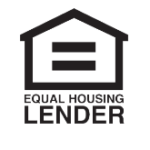Rolando Font
The term “2-1 buydown” can be daunting for those new to the real estate and mortgage worlds, but this financial strategy can offer great benefits for sellers. It’s important for sellers to understand how a 2-1 buydown works and the advantages it can bring in order to decide if it’s the right move for their property. In this blog post, we’ll be exploring what a 2-1 buydown is and how sellers can benefit from it.
What is a 2-1 Buydown?
A 2-1 buydown is a financing option that can be negotiated between buyers and sellers when buying a home. It is often an attractive option for both parties involved as it can reduce the buyer’s monthly payments, making it more affordable for them, while allowing the seller to remain competitive in the housing market. The 2-1 buydown works by the seller paying a fee at closing that reduces the interest rate on the buyer’s mortgage by 2% in year one and 1% in year two. This allows the buyer to enjoy a lower monthly payment, while also making the home more attractive to potential buyers. Realtors may suggest this as an option to sellers looking to sell their property quickly or increase the likelihood of an offer. Lenders may also be open to a 2-1 buydown, as it may reduce their risk associated with a loan and improve their lending reputation. As with any major financing decision, it is important to understand all of the terms and
conditions associated with a 2-1 buydown prior to agreeing to any terms.
Who can benefit from it?
A 2-1 buydown is a negotiation tactic that can be used by a realtor or housing lender to benefit both the seller and the buyer. For the seller, it is an attractive alternative to offering a lump sum at closing. By offering a 2-1 buydown, the seller can provide an incentive to the buyer in the form of a lower interest rate on the loan.
The buyer benefits by having a lower mortgage rate than they would otherwise qualify for, reducing their monthly payment and the amount of interest paid over the life of the loan. This could be especially beneficial for buyers who are first-time homebuyers, veterans, or those with less-than-perfect credit.
Using a 2-1 buydown to negotiate can be beneficial for both parties in the transaction. The seller can use this method to attract more buyers and potentially receive a better offer than if they offered cash at closing. Meanwhile, the buyer may qualify for a lower interest rate than what they initially expected.
For any real estate transaction, it is always important to consult with a trusted realtor and/or housing lender to make sure you fully understand all of your options. A 2-1 buydown could be a great negotiation tool for both sellers and buyers, but it is important to weigh all of the risks before making a decision.
How does it work?
A 2-1 buydown can help homebuyers lower their monthly housing costs. With this form of mortgage financing, lenders offer borrowers a decreased interest rate for the first two years of their loan. This can be beneficial to homebuyers who are looking to save money over the long term.
The way it works is that the lender reduces the interest rate by two percentage points for the first year and then one percentage point for the second year. For example, if the mortgage loan had an interest rate of 7% and an APR of 7.094%, then with a 2-1 buydown, the borrower would have a 5% interest rate in year one and a 6% interest rate in year two. In year three, the interest rate would go back up to the original rate of 7%.
The decrease in interest rates leads to lower monthly payments for the first two years of the loan. By reducing the principal and interest (P&I) payments for the first two years, buyers can save money and use that extra cash flow for other things like paying off other debts or saving for future purchases.
However, it’s important to consider all costs associated with a 2-1 buydown, as lenders may charge a fee for offering such a favorable housing lending rate. It’s also important to note that taxes and insurance may not be included in your monthly payments, so you should factor those into your calculations when considering a 2-1 buydown.
Are there any risks involved?
Yes, when considering a 2-1 buydown, there are some risks to consider. The most prominent risk is the high upfront cost of the buydown which can only be justified if the buyer is receiving the buydown as a seller concession. The payments increase after the first and second year of the buydown before stabilizing in the third year. This could be a risk for homebuyers who may not be able to adjust to the increased payments due to lack of income growth. Additionally, if there are any issues with their escrow agent sending the buydown payment, then the homebuyer is responsible for paying the difference. It’s important to consult a Mortgage Planning Specialist like Rolando Font from The Veteran Mortgage Team to ensure that all risks are minimized when considering a 2-1 buydown.



